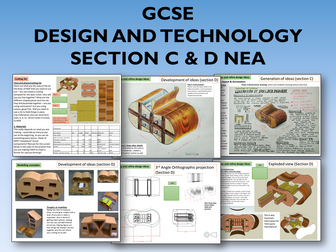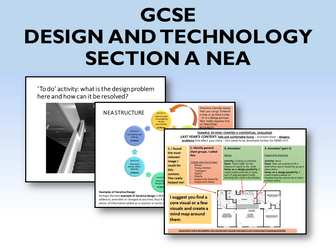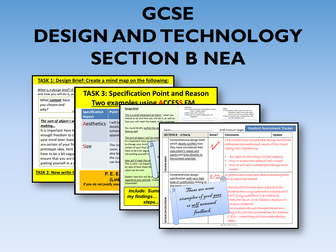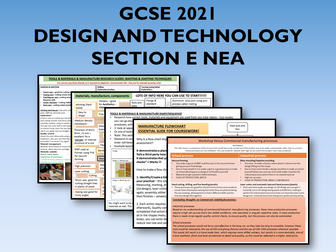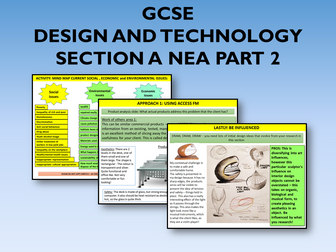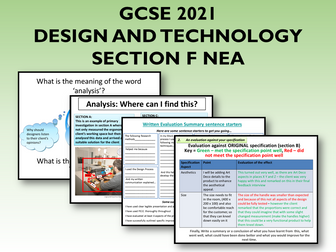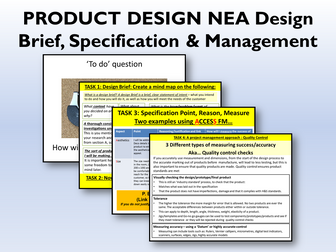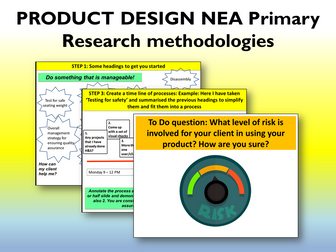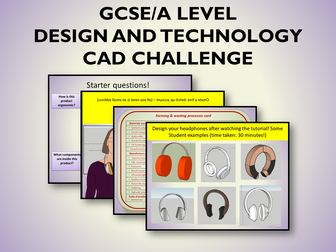
2021 AQA DT GCSE NEA Guide to Section C & D
This is the perfect resource for remote learning. This will get students enthused, confident and carrying on independently, supported by a high quality power point, 1 and half hours of (private) YouTube tutorials, stunning visuals and animations, as well as relevant questions, techniques and directed tasks to get them finishing off Section C & D
This is an extremely comprehensive resource that covers 2 units.
Learning outcomes:
How the mark scheme translates into chunked creative tasks, including:
How to draw a really well annotated generated idea from section C, including scrap views and essential links back to Specification and Brief, discussing importance of clear annotation
How to draw rectangular prisms and ellipses in isometric projection, with a strong emphasis on rendering realistic textures to communicate information on choice of materials
How to go about the cardboard modelling aspect at home with recycled materials
How to develop design ideas of multifunctional prototypes on sketch up free – also how to create separate components such as drawers and even door knobs
How to draw orthographic projections of prototypes on sketch up free
How to draw exploded wireframe views of prototypes on sketch up free
How to draw cutting lists of prototypes on sketch up free and use MS Excel to create purchase lists
How to research relevant materials (components covered above) using tables and inspiration for testing the properties of materials
How to write a Manufacturing specification
Potential learning outcomes:
Next 4 - 5 slides/pages of NEA / Length – 4 - 5 lessons (including student activity)
This is one of my 5 part TES units dealing with the 2021 GCSE NEA. Please look to the resources here for section A (first two), section B and a combination section C/D unit/power point as well as section E (which reflects the most recent changes to the marks scheme):
https://www.tes.com/teaching-resource/2021-aqa-dt-gcse-nea-guide-to-section-e-12494870
https://www.tes.com/teaching-resource/2021-aqa-dt-gcse-nea-guide-to-section-c-and-d-12477833
https://www.tes.com/teaching-resource/2021-aqa-dt-gcse-nea-guide-to-section-a-12395717
https://www.tes.com/teaching-resource/2021-aqa-dt-gcse-nea-section-a-part-2-12401619
https://www.tes.com/teaching-resource/2021-aqa-dt-gcse-nea-guide-to-section-b-12417046
I hope these help you and your students succeed!
Please add a positive review/some stars if you found this useful as this really helps; THANK YOU!
